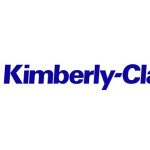BIC Second Quarter and First Half 2023 Results
BIC reported robust growth in the second quarter and 7.0% net sales growth for the first half with market share gains in most key regions across all divisions, and continued strong growth momentum.
The first half of 2023 saw adjusted EBIT margin at 14.9%. This was negatively impacted by input cost inflation (raw materials and electricity), fixed cost absorption and Forex, partially offset by favourable price and mix.
The Human Expression (stationary) category saw an increase of 9.1% net sales growth for the first half at constant currency (CC). This was driven by a solid back-to-school sell-in in North America and Europe, and double-digit growth in developing markets.
To read the full results, visit the BIC website.
Podcast: Half-year update from ACME’s Walter Johnsen
The latest OPI Talk podcast catches up with Acme United CEO Walter Johnsen following the release of the company’s Q2 earnings. Johnsen gives his take on a number of market areas and trends, including this year’s back-to-school season, the state of the economy, reducing supply chain risk and the office products channel.
To listen to the podcast, visit the OPI website.
Retailers Hail Tentative Agreement between UPS and Teamsters
Many retailers breathed easier following the news on July 25 that UPS and the Teamsters had tentatively reached a deal. The Retail Industry Leaders Association, which had recently warned that uncertainty around a possible strike was “kryptonite” to supply chains and advocated for a resolution to the talks ahead of the deadline, called the handshake agreement “an enormous relief to retailers.”
However, the agreement has not yet been ratified. Teamsters locals representatives will meet on July 31 to review and recommend the agreement, then voting will run from Aug. 3 to Aug. 22, according to Supply Chain Dive. To be ratified and implemented, each agreement — the national master contract deal as well as supplementals — requires a majority to vote “yes.”
To read the full article, visit the Retail Dive website.
Xerox Releases Second-Quarter Results
Resilient demand and balanced execution drive growth in revenue and profits. Here are the highlights from Xerox’ second quarter financial results:
- Revenue of $1.75 billion, up 0.4%, or 0.5% in constant currency.
- GAAP (loss) earnings per share (EPS) of $(0.41), down $0.36 year-over-year.
- Adjusted EPS of $0.44, up $0.31 year-over-year.
- Adjusted operating margin of 6.1%, up 410 basis points year-over-year.
- Operating cash flow of $95 million, up $180 million year-over-year.
- Free cash flow of $88 million, up $186 million year-over-year.
- Increasing guidance for adjusted operating margin to a range of 5.5% to 6.0%, and free cash flow to at least $600 million.
“Over the last 12 months, Xerox has taken significant steps to strengthen its operating and financial discipline, leading to another quarter of profitable growth amid a dynamic macroeconomic backdrop,” said Steve Bandrowczak, chief executive officer at Xerox. “I’m proud of the part all Xerox employees and partners have played in our continued success. An improved operating system leaves us well positioned to pursue growth opportunities as we focus on meeting clients’ evolving needs in today’s hybrid workplace.”
To read the full article, visit the Xerox website.
UPM Half Year Financial Report
Strong downturn in markets pushed UPM’s Q2 results to exceptional lows. Here are the highlights from UPM’s second quarter financial results:
Q2 2023 highlights
- Sales were EUR 2,558 million (2,562 million in Q2 2022)
- Comparable EBIT decreased by 71% to EUR 114 million, 4.5% of sales (387 million, 15.1%)
- Delivery volumes were impacted by destocking in various product value chains
- Pulp and energy prices decreased to cyclical bottom levels
- Operating cash flow was EUR 459 million (-879 million), supported by cash inflow from energy hedges
- UPM Paso de los Toros pulp mill in Uruguay ramping up production according to the plan
- The OL3 nuclear power plant unit began regular commercial electricity production
- Permanent closures of PM6 at UPM Schongau, Germany and PM4 at UPM Steyrermühl, Austria
Highlights from the first half of 2023 are as follows:
- Sales increased by 5% to EUR 5,345 million (5,069 million in H1 2022)
- Comparable EBIT decreased by 29% to EUR 470 million (664 million), and was 8.8% (13.1%) of sales
- Operating cash flow was EUR 1,173 million (-867 million), supported by cash inflow from energy hedges
- Net debt decreased to EUR 2,557 million (2,688 million) and the net debt to EBITDA ratio was 1.07 (1.42)
- Cash funds and unused committed credit facilities totalled EUR 6.4 billion at the end of Q2 2023
- UPM finalised its full exit from Russia
- UPM Leuna biochemicals refinery project schedule updated, start-up expected by the end of 2024 and investment estimate is EUR 1,180 million
“During the first half of the year the business environment was exceptional. Geopolitical uncertainty, low economic activity and high inflation were impacting consumers. At the same time, the extraordinary destocking in product value chains continued in our industry. Consequently, we saw a strong and rapid downturn in the markets. Deliveries of our products were well below estimated end-use demand, and global commodity prices, such as pulp and energy, fell from historic highs to cyclical bottom levels in six months,” said Jussi Pesonen, UPM’s president and CEO.
To read the full article, visit the UPM website.











